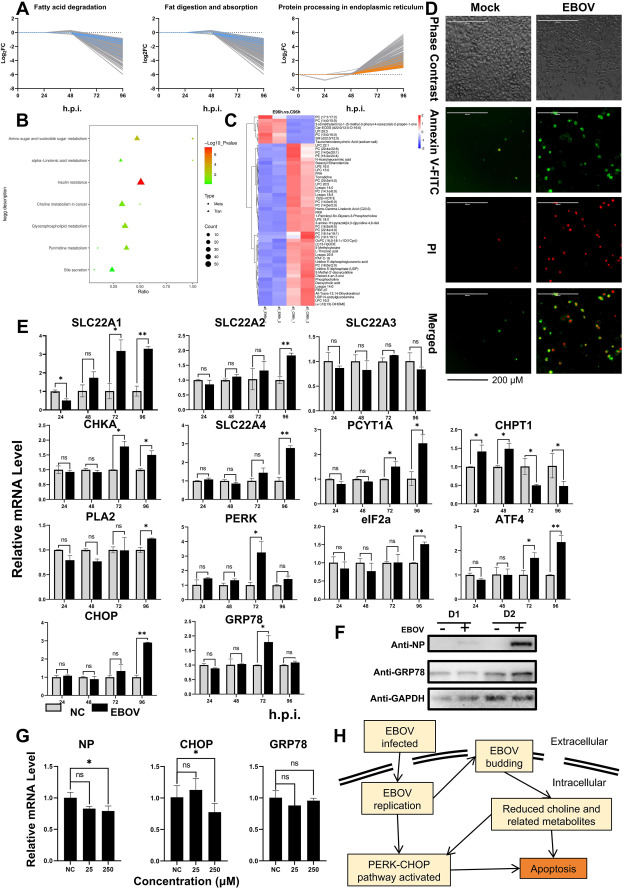
Integrative analysis of the metabolomes and transcriptomes of Ebola virus-infected cells: Uncovering pathways related to hepatic apoptosis


Ebola virus (EBOV) belongs to the Filoviridae family within the genus Ebolavirus and is responsible for the highly lethal hemorrhagic disease known as Ebola virus disease (EVD). The clinical manifestations of EVD include hemorrhagic fever, organ failure, and immune dysfunction.1 Liver damage is a significant contributor to mortality in EBOV-infected patients, and cell death plays a pivotal role in this process. Early reports indicated that EBOV infection could trigger multiple forms of cell death, and EBOV-induced hepatocyte apoptosis may be linked to liver injury, as liver conditions are significantly improved in Bim/Bid-deficient mice2 after EBOV infection. Choline-related metabolism plays an important role in cell membrane transportation and construction and is a significant indicator of cell injury.3 In the context of liver diseases associated with viruses, downstream metabolites of choline, such as fatty acids, serve as key indicators of long-term liver damage.4 Viral infection can lead to significant alterations in the host cell's internal environment, resulting in the accumulation of numerous folded and/or misfolded proteins originating from not only cells but also viruses within the endoplasmic reticulum (ER). Further investigation revealed that ER stress can trigger cell apoptosis through multiple signaling pathways.5 In summary, we investigated whether choline could attenuate EBOV infection and diminish apoptosis by reducing CHOP (C/EBP homologous protein) gene expression, revealing a novel mechanism by which EBOV induces host apoptosis.
